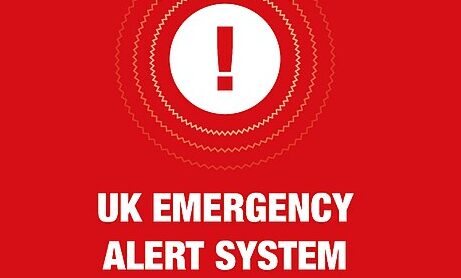Phones will blast a 10-second alert this September as the UK runs its second mass warning system test
At exactly 3 pm on Sunday, 7 September, every mobile phone in the UK is set to erupt in a loud, piercing siren – even if silenced – as the government carries out its second-ever nationwide emergency alert test.
An estimated 87 million devices will simultaneously vibrate, sound an alarm, and flash a message on screen, in a move officials say is crucial for preparing the public for life-threatening emergencies. The test is part of the UK Emergency Alerts system, first trialled in April 2023 and used five times since for actual crises ranging from devastating storms to an unexploded wartime bomb.
Phones connected to 4G or 5G networks – including tablets and smartwatches with mobile data – will be affected. Users won’t need to download anything or opt in. If you’re in range of a mast, you’ll receive it. And this time, it’s not just a drill – it’s a full-scale simulation.
WHAT TO EXPECT
The test will cause phones to emit a siren sound for about 10 seconds, even if they’re on silent or do-not-disturb mode. A message will flash across the screen reading:
“This is a test of Emergency Alerts, a new UK government service that will warn you if there’s a life-threatening emergency nearby.
In a real emergency, follow the instructions in the alert to keep yourself and others safe. Visit gov.uk/alerts for more information.
This is a test. You do not need to take any action.”
The government insists the test is essential to build public awareness. “It’s like testing a national fire alarm,” said Pat McFadden, Chancellor of the Duchy of Lancaster. “This system is part of our defences, part of our resilience.”
A TOOL ALREADY USED TO SAVE LIVES
Since the 2023 test, the alert system has been used five times – with the most extensive deployment during Storm Eowyn in January 2025, when 4.5 million people across Scotland and Northern Ireland received a real alert as red weather warnings threatened lives.
Embed from Getty ImagesIt’s also been used for severe flooding near Barrow upon Soar and during Storm Darragh, which killed two people in late 2024. But it’s not just weather – in February 2024, the system was used during the dramatic removal of a WWII bomb in Plymouth, telling thousands of residents to avoid a specific route while the military convoyed the explosive to the coast.
Plymouth City Council chief Tracey Lee called the system “invaluable,” adding it reached people “instantly” during an hour of urgent need.
BUT NOT EVERYONE IS CONVINCED
The test has raised alarms among domestic violence charities, who warn it could endanger victims hiding phones from abusers. Campaigners have urged users in such situations to turn off “emergency alerts” in phone settings or power off their devices entirely before 3pm.
The government has acknowledged the risk and posted instructions for how to disable alerts on both iOS and Android devices. It emphasises, however, that no data is collected, no reply is needed, and the alert will vanish once acknowledged.
HOW THE SYSTEM WORKS
Unlike the SMS texts sent during the COVID-19 lockdowns, these alerts are broadcast using mobile masts – meaning there’s no need for your phone number. They are geographically targeted, so people in London won’t receive a flood warning meant for Cornwall.
Manuel Cornelisse, from Everbridge – the firm behind the tech – said the system works even under heavy network load. “It’s designed to cut through crowd congestion and panic. Football ground? Music festival? You’ll still get the alert.”
As September’s test approaches, government officials hope it builds confidence in the system. For most, it’ll just be an unusual interruption – a blaring reminder of what could one day save their life.
